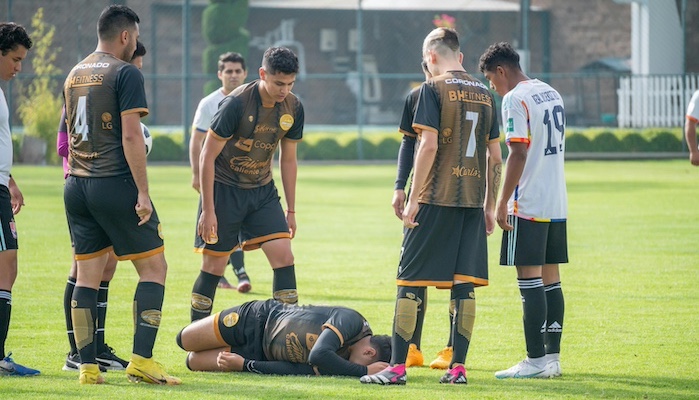
What is a "sports hernia"?
A hernia is an abnormal protrusion (bulging) of tissue through a space where it doesn’t belong, often causing pain due to the trapped tissue. Common types of hernias include a herniated disk and the traditional "hernia" (in medical terms, an inguinal hernia).
In a herniated disk, the tough outer layer (annulus fibrosus) of an intervertebral disk (the cushion between the bones in the spine) tears, allowing the jelly-like inner core (nucleus pulposus) to push through the tear. In an inguinal hernia, a small weakening of the inner abdominal wall allows the bowel to slip through, especially during activities that increase abdominal pressure, like lifting, coughing, or straining.
However, a sports hernia is not a "true" hernia. There is no abnormal protrusion of the bowel or any other tissue. Instead, a sports hernia, also called "athletic pubalgia," involves the tearing of tissue in the lower abdominal wall, where it connects to the pubic bone.
How is a sports hernia diagnosed?
Diagnosing a sports hernia can be challenging, as its symptoms often overlap with those of an inguinal hernia. Both conditions typically cause groin pain, which becomes chronic (lasting for weeks) and worsens with intense activity. A person with a sports hernia often experiences minimal pain at rest, which gradually increases throughout the activity. By the end of a game, the pain can be so severe that full strides are impossible, especially during the last 20 minutes of play.
Physical examination is key to differentiating between a sports hernia and an inguinal hernia. In both conditions, pressing the area near the pubic bone may cause pain. However, in patients with an inguinal hernia, the examiner can feel the herniated bowel, especially when the patient coughs. Patients with a sports hernia usually experience increased groin pain during exercises like sit-ups, particularly when performed with resistance.
Sports hernias are diagnosed clinically, meaning no imaging test such as X-rays, CT scans, or MRIs can reliably confirm the condition. However, these studies help rule out other potential causes of groin pain, such as hip labral tears, which can mimic the symptoms of a sports hernia.
Why do sports hernias occur?
The pubic bone serves as the anchor point for several powerful muscles, including the abdominal and adductor muscles. The adductors a group of muscles on the inner thigh are essential for quick directional changes (cutting), which often leads to "groin strains" or "groin pulls."
In sports like soccer, which requires frequent cutting movements, the adductor muscles become highly developed. Sports hernias occur when there is an imbalance between the adductor muscles and the abdominal muscles. The stronger adductors pull the pubic bone downward, overstretching and eventually tearing the weaker abdominal muscles.
How are sports hernias treated?
Initial treatment for sports hernias involves resting from physical activity, using anti-inflammatory medications to manage pain, and engaging in physical therapy to restore balance to the core muscles. Unfortunately, sports hernias often do not heal with non-surgical treatments, and surgery is frequently required for long-term relief and return to sports.
Surgery should be considered for athletes who have tried rest and physical therapy for up to three months without improvement. The procedure, often performed through a fiber-optic scope, typically involves two key steps: (1) repairing the torn abdominal wall, sometimes with the use of synthetic mesh for added support, and (2) releasing part of the adductor muscle attachment to reduce its pull on the pubic bone. Most athletes can return to play within a few months after surgery, depending on the extent of the injury and the type of repair performed.
Precision Pain Care and Rehabilitation has two convenient locations in Richmond Hill – Queens, and New Hyde Park – Long Island. Call the Queens office at (718) 215-1888 or (516) 419-4480 for the Long Island office to arrange an appointment with our Interventional Pain Management Specialists, Dr. Jeffrey Chacko or Dr. Sonny Ahluwalia.















